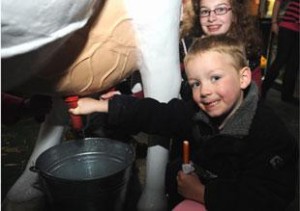Davey Alba asks in Wired, what’s almost as important to life as food? Food safety.
Last year, in the US, according to the CDC, one in six people were affected by food-borne diseases, resulting in 128,000 hospitalizations, 3,000 deaths, and an economic burden totaling $80 billion.
Scientist from IBM Research and Mars Incorporated have announced the Sequencing the Food Supply Chain Consortium, a collaborative food safety organization that aims to leverage advances in genomics and analytics to further our understanding of what makes food safe.
The researchers will conduct the largest-ever metagenomics study of our foods, sequencing the DNA and RNA of popular foods in an effort to identify what traits keep food safe and these can be effected by outside microorganisms and other factors. Eventually, the researchers will extend the project “from farm to fork,” examining materials across the length and breadth of the supply chain.
In this way, IBM Research and Mars are joining many others, including the San Francisco-based startup Hampton Creek, who hope to supercharge food R&D using data analysis. After reinventing Google and Facebook and so many other online operations, the big data movement is now moving into other industries, ranging from medicine and healthcare to the development of new industrial materials.
“We want to get a baseline for safe food ingredients, all the way up and down the food supply chain, including what makes healthy biochemistry,” says James Kaufman, public health manager for IBM Research. “If you can understand what a normal, healthy microbiome looks like, you can figure some things out about how that microbiome will respond to the unknown.”
Essentially, the scientists are hoping to uncover what combination of microbes that makes food ingredients safe, and what factors affect the structure of these microbial communities, including exposure to new pathogenic organisms and other impurities that may not have ever come up yet. It is these unknowns, Kaufman explains, that can eventually make food unsafe—whether that’s the evolution of new organisms, a misguided attempt at innovating food, or even because of an intentional act of terrorism.
And for no particular reason, here are the Beatles, who today in 1969, made their last public performance on the roof of Apple Records in London.
U2 sucks.



